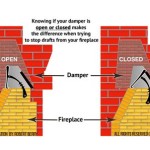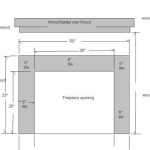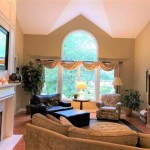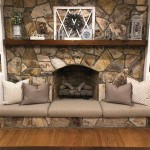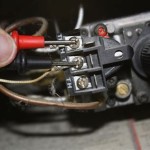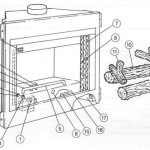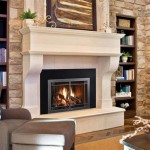Here's an article focusing on Contemporary Propane Gas Fireplaces, adhering to your specifications:
Contemporary Propane Gas Fireplaces: A Modern Heating Solution
Contemporary propane gas fireplaces have become increasingly popular among homeowners seeking a blend of aesthetic appeal, convenience, and efficient heating. Unlike traditional wood-burning fireplaces, these modern alternatives offer a clean-burning, hassle-free experience, making them a desirable addition to various living spaces. These fireplaces provide controllable warmth without the mess and labor associated with wood.
The design versatility of contemporary propane gas fireplaces is a significant contributing factor to their widespread adoption. They are available in a diverse range of styles, from sleek linear models to more traditional designs with updated features. This adaptability allows homeowners to seamlessly integrate a fireplace into virtually any interior design scheme, whether it leans towards minimalist modern, rustic chic, or classic elegance. Manufacturers continually innovate, offering customizable options like different media beds (glass beads, ceramic logs, river rocks) and various flame presentation styles.
Propane fireplaces offer a significant advantage over other fuel sources in terms of ease of use. With the simple flip of a switch or the press of a button on a remote control, homeowners can ignite the flames and instantly enjoy the warmth and ambiance of a fire. There's no need to haul wood, build a fire, or wait for kindling to catch. The consistent heat output can be regulated with precision, ensuring a comfortable room temperature. The elimination of wood handling also removes the concerns related to insects and allergens that are sometimes associated with wood storage.
Convenience and Control: Remote Operation and Thermostatic Settings
One of the most attractive features of contemporary propane gas fireplaces is their operational convenience. Many models come equipped with remote controls, allowing users to adjust the flame height, temperature, and even set timers from the comfort of their sofa. This level of control is particularly beneficial for individuals with mobility issues or those who simply value effortless operation. Furthermore, many units integrate with smart home systems, enabling remote control via smartphone apps and voice commands. Programmable thermostats ensure consistent temperature regulation, maximizing comfort and energy efficiency.
The integration of thermostatic controls provides a distinct advantage in terms of energy management. Users can set a desired room temperature, and the fireplace will automatically adjust its flame output to maintain that temperature. This not only enhances comfort but also reduces propane consumption, contributing to lower energy bills. Some advanced models even feature zone heating capabilities, allowing homeowners to heat specific areas of their homes without wasting energy on unoccupied spaces. This targeted approach to heating can significantly reduce overall energy consumption during colder months.
Efficiency and Environmental Considerations: Clean Burning and Reduced Emissions
Compared to traditional wood-burning fireplaces, contemporary propane gas fireplaces are significantly more efficient and environmentally friendly. Propane is a clean-burning fuel, producing fewer emissions than wood. This reduces the amount of particulate matter released into the atmosphere, contributing to improved air quality. The efficiency of propane fireplaces also means that more of the fuel's energy is converted into usable heat, minimizing waste. Modern propane fireplaces boast efficiency ratings that can exceed 80%, whereas traditional wood-burning fireplaces often have efficiency ratings as low as 10-20%.
While any combustion process will produce some emissions, propane's relatively clean burning characteristics make it a preferable choice for environmentally conscious homeowners. Furthermore, the use of a propane fireplace eliminates the need to cut down trees for firewood, contributing to forest conservation. The reduced emissions from propane fireplaces also lessen the risk of indoor air pollution, which can be a concern with wood-burning fireplaces. The absence of smoke and ash associated with wood fires results in a cleaner indoor environment. Additionally, many manufacturers are making improvements to their propane fireplaces to make them even more efficient and environmentally friendly.
Installation and Safety: Professional Installation and Safety Features
Proper installation is crucial for the safe and efficient operation of any propane gas fireplace. It is strongly recommended that installation be performed by a qualified professional who is familiar with local building codes and safety regulations. This ensures that the fireplace is properly connected to the propane supply, vented correctly, and that all safety features are functioning as intended. A professional installation minimizes the risk of gas leaks, carbon monoxide poisoning, and other potential hazards.
Contemporary propane gas fireplaces are equipped with various safety features designed to protect homeowners. These features often include oxygen depletion sensors (ODS), which automatically shut off the gas supply if the oxygen level in the room drops to an unsafe level. Pilotless ignition systems eliminate the need for a continuously burning pilot light, reducing propane consumption and the risk of accidental ignition. Tempered glass fronts protect against accidental contact with the flames while providing a clear view of the fire. Furthermore, ongoing maintenance and regular inspections are essential for ensuring continued safe operation. It's essential to check the fireplace's venting system at least once a year and replace the batteries in your carbon monoxide detector when necessary.
In addition, homeowners need to be aware of the different types of venting options available when choosing a propane fireplace. Direct vent fireplaces draw combustion air from outside and vent exhaust gases directly to the outside, making them suitable for installation in a wider range of locations. Vent-free fireplaces do not require venting, as they burn propane so cleanly that the exhaust gases are deemed safe for indoor use. However, vent-free models may be subject to stricter regulations and may not be permitted in all areas. Understanding the different venting requirements is crucial for selecting the right fireplace for your home and ensuring compliance with local codes.

Contemporary Gas Fireplaces SÓlas Fires

Linear Gas Fireplaces Valor

Natural Gas Fireplace Lucius 100 European Home Propane Contemporary Closed Hearth

Natural Gas Fireplace Summum 140 C European Home Propane Corner Contemporary

Modern Gas Fireplace Inserts Napoleon Fireplaces

Empire Boulevard Linear Ventless Gas Fireplace 60 Woodland Direct

Superior 55 Inch Contemporary Linear Dv Gas Fireplace Drl3555ten North Country Fire

Freestanding Gas Fireplaces Fergus Fireplace

Superior 55 Direct Vent Contemporary Linear Gas Fireplace Drl2055 Us

Enviro S Gas S50 Stove
Related Posts

